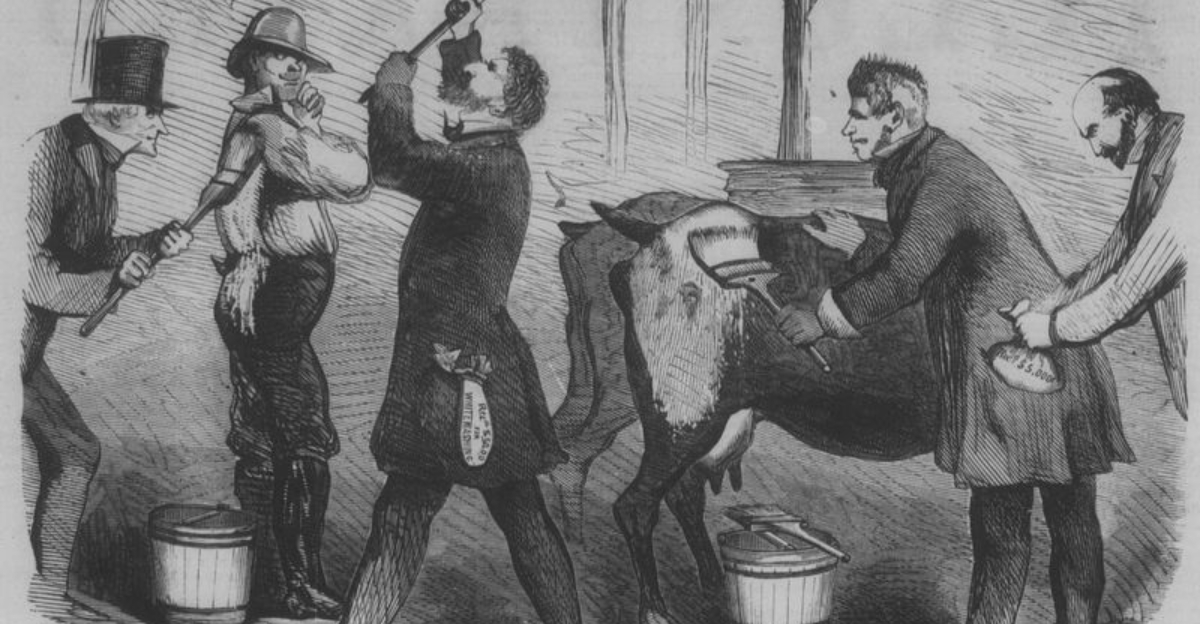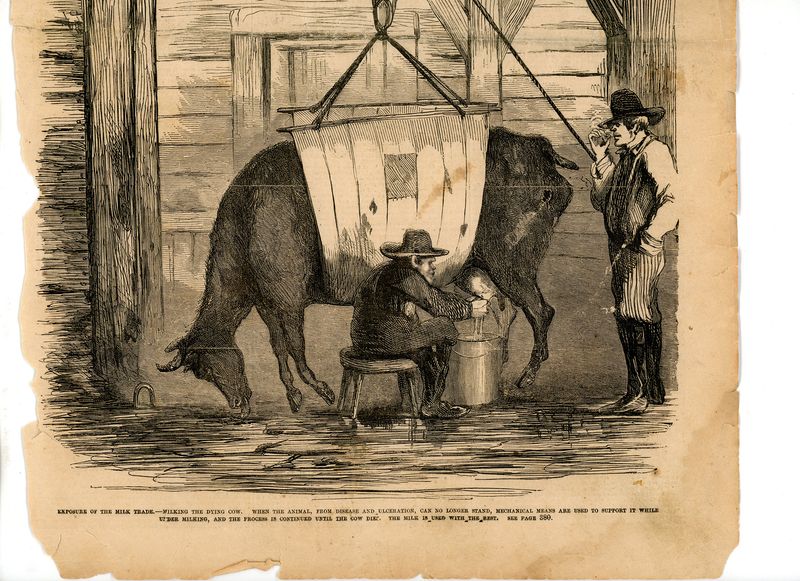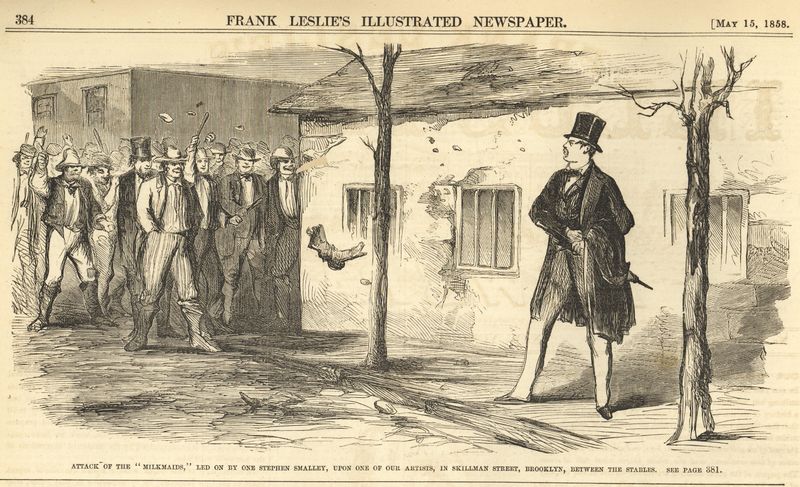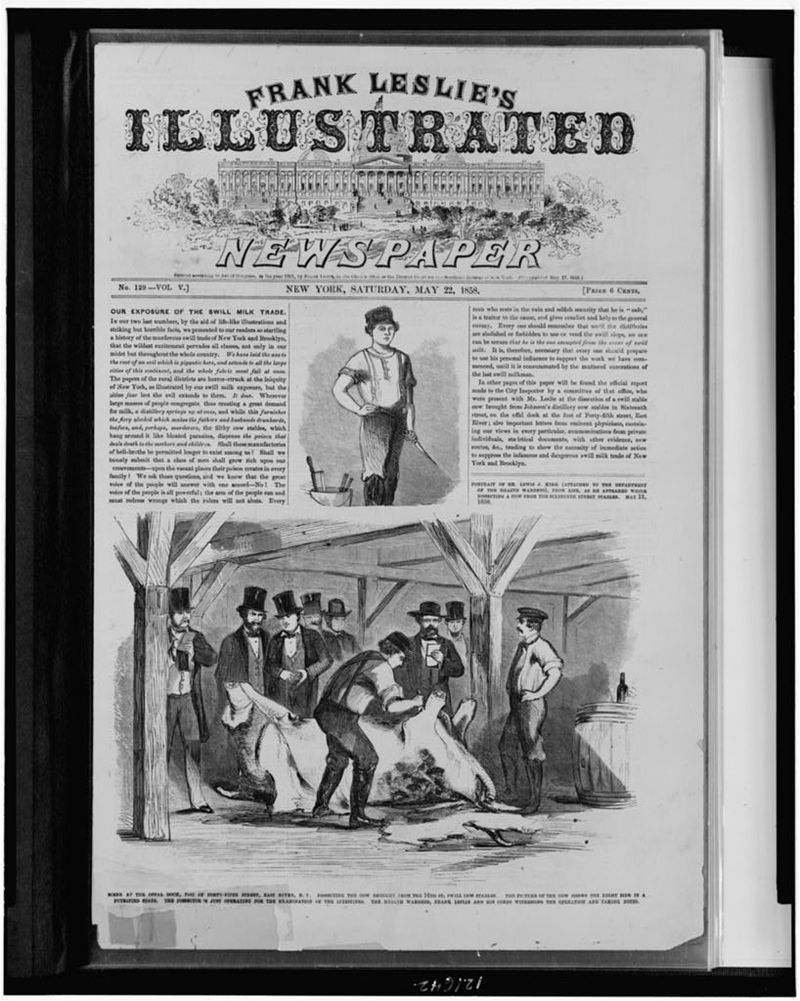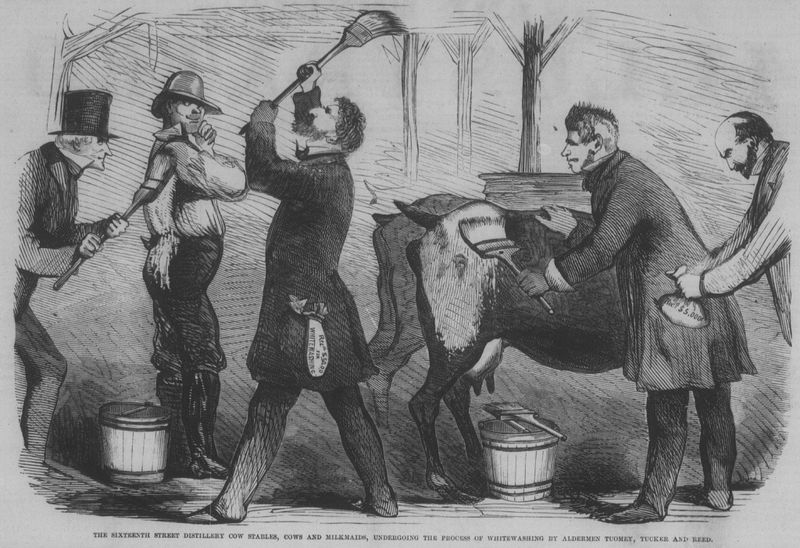In the 1850s, a crisis unfolded in urban America as the demand for milk surged, leading to the deadly ‘Swill Milk’ epidemic. This tragedy resulted in the deaths of nearly 8,000 infants, highlighting the dangers of unsanitary food practices and sparking a movement towards food safety regulations. Explore how this scandal unfolded, the key players who exposed it, and its lasting impact on public health.
1. The Rise of ‘Swill Milk’
In the bustling cities of 1850s America, milk was in high demand, but supply couldn’t keep pace. Dairies, desperate to meet this demand, resorted to keeping cows in squalid, overcrowded stables adjacent to whiskey distilleries. Fed on the leftover grain mash, or “swill,” these cows produced thin, bluish milk teeming with bacteria. This so-called “swill milk” was a catastrophe waiting to happen. In a time before pasteurization, this contaminated milk became a silent killer, particularly affecting the most vulnerable population: infants.
2. How They Made It Look Drinkable
In an era with no modern safety standards, sellers went to extreme lengths to make swill milk appear palatable. To mask its thin and bluish appearance, dairy dealers added plaster of Paris to whiten it. Molasses was mixed in to give it a more natural color, while substances like chalk, flour, and even eggs were used to thicken it. These deceptive practices not only concealed the poor quality of the milk but also exacerbated the health risks, as unsuspecting families fed this toxic concoction to their children.
3. The Deadly Consequences
The aftermath of consuming swill milk was devastating, especially for infants. Affected babies often suffered from severe diarrhea, leading to fatal dehydration. The milk’s lack of nutritional value caused starvation, and bacterial contamination resulted in cholera-like symptoms. By 1858, the death toll from this tainted milk reached an estimated 8,000 infants in New York City alone. This tragic loss underscored the urgent need for public health reforms and increased scrutiny on food products, setting the stage for future regulatory measures.
4. The Doctor Who Exposed the Scandal
Dr. Robert Hartley, a public health advocate in the 1840s, was one of the first to raise alarms about swill milk. His publication ‘An Historical, Scientific and Practical Essay on Milk’ in 1842 detailed the horrors of swill milk production. Despite his efforts and the ensuing public outrage, corrupt officials managed to suppress the information for years. Dr. Hartley’s work laid the groundwork for future exposés and highlighted the critical role of healthcare professionals in advocating for safer food practices.
5. The Newspaper That Blew the Lid Off
In 1858, Frank Leslie’s Illustrated Newspaper broke the silence with a shocking exposé on swill milk. Accompanied by vivid illustrations of diseased cows housed in filthy conditions, the article captured the public’s attention and forced politicians to confront the issue. This media coverage played a pivotal role in mobilizing public opinion and ultimately led to significant legislative changes. The power of print media in effecting social change was never more apparent, proving that journalism could be a catalyst for reform.
6. The Milk Wars & Fake ‘Country Milk’
As the swill milk scandal unfolded, dairy dealers fought to protect their profits. They bribed officials to turn a blind eye and began marketing ‘country milk,’ often just rebranded swill milk. Some even resorted to drugging sick cows with opium to keep them standing for milking. This period, known as the ‘Milk Wars,’ illustrated the lengths to which industry insiders would go to maintain their business. It also underscored the need for stringent regulations to protect consumers from corporate malpractice.
7. The First Food Safety Laws
Public pressure eventually led to the implementation of the 1862 New York Pure Milk Law, marking the beginning of food safety legislation in the United States. While enforcement was initially weak, this law laid the foundation for future regulations. The scandal also contributed to the eventual rise of pasteurization in the 1890s and the creation of the FDA in 1906. This groundbreaking legislation signified a turning point in consumer protection, emphasizing the government’s responsibility to ensure the safety of food products.
8. The Legacy of the Swill Milk Scandal
The swill milk scandal of the 1850s left an indelible mark on the history of food safety. It catalyzed the development of modern food safety regulations, spurred the push for pasteurization, and raised awareness about corporate greed in public health. The tragedy highlighted the importance of vigilance and accountability in the food industry. Today, the lessons from this dark chapter continue to inform policy-making, ensuring that food safety remains a priority for governments and health organizations worldwide.
